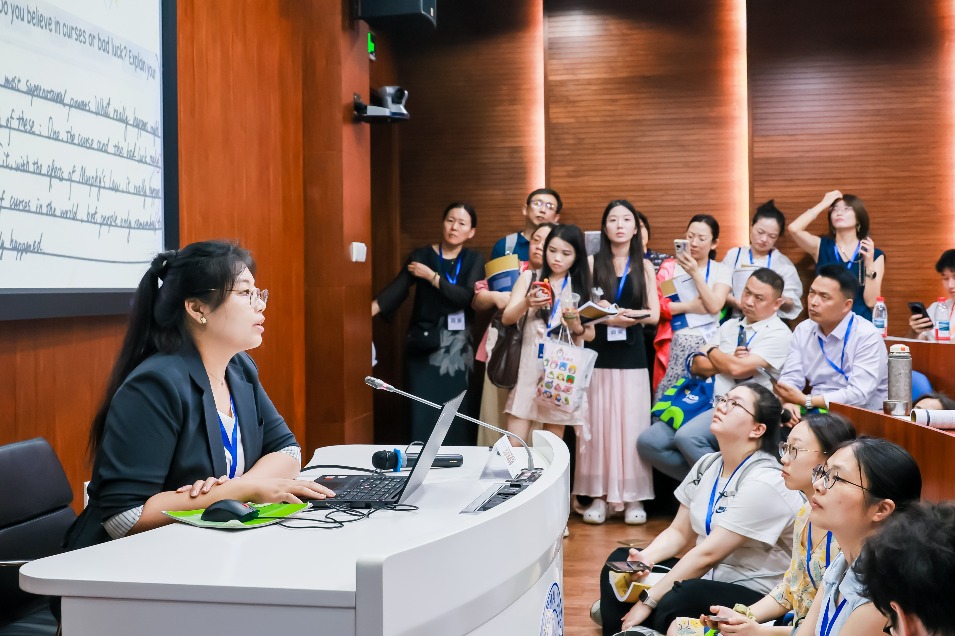Getting the earth to reveal our history
Ancient city's secrets may shed light on the journey of mankind, Deng Zhangyu reports.

Editor's note: A national comprehensive research program, launched in 2002, to trace the origins of Chinese civilization, has led to the excavations and studies of key sites that are about 3,500 to 5,500 years old. It has revealed a host of secrets about ancient China, including how early civilizations were formed and how they merged to create unity in diversity. China Daily speaks to experts working at these sites to decode their recent discoveries.
Zan Cunbao and his team from the Hubei Provincial Institute of Cultural Relics and Archaeology have been digging pits since April, sifting through layers of earth day after day, at Shijiahe site in Tianmen, Hubei province. Their aim is to find evidence of buildings used for high-ranking groups, such as kings or military officials, at the prehistoric site dating back 6,000 years.
Listed among the Top 100 Archaeological Discoveries of China in the Past Century, which was released last year, the site boasts continuous cultures from 5,900 to 3,800 years ago. It is regarded as the capital city that was the largest in size, and owned the biggest number of settlement clusters surrounding it in the middle reaches of the Yangtze River, in the late Neolithic period.
Zan, who started excavation in 2017 at the Shijiahe site, says their work, searching for buildings used by higher echelons of society in the ancient city of 1.2 million square meters, is to figure out functions of these types of buildings and who actually lived there.
Some ruins of houses and large-scale buildings have been discovered after years of excavation. Pottery, stone axes and even a piece of a woven reed mat were found in rooms built thousands of years ago.
Fang Qin, director of the Hubei Provincial Institute of Cultural Relics and Archaeology, says that some findings prove that there might have been palaces, suggesting that rulers or kings probably existed.
"A ruler or a king represents a civilized society. Previously, we've found lots of sophisticated jade pieces inside tombs, which also proves that there might have been high-ranking groups living here," explains Fang.
Shijiahe site was discovered in 1954. A large number of pottery, jadeware and stone tools have been unearthed to show the glory of an early civilization developed at the middle reaches of the Yangtze River. Now, the search for buildings, where high-level formal functions were held, will offer a more comprehensive understanding of the civilization.
In 1989, Fang was in the same place where Zan now works at the Shijiahe site to find the first traces of houses for the ancient city's elite. At that time, Fang was an intern with the archaeology group and they stopped further digging due to the limits of technology at the time.
A team leader now, Fang says it's like a mission for him to resume the work he left unfinished 33 years ago.
According to Fang, the ancient settlement clusters at the Shijiahe site were first built between 5,800 to 4800 years ago. The center of the city was Tanjialing. The culture developed to reach its peak between 4,800 to 4,200 years ago, represented by Shijiahe city, built at the site covering an area of 1.2 million sq m. The last period was defined as post-Shijiahe culture between 4,200 to 3,800 years ago, when many items of sophisticated jadeware were produced.
"It's a continuous and developing culture in the middle reaches of the Yangtze River. It's also a key site to trace the origins of Chinese civilization," Fang says.
The appearance of a city and the social division of labor are standards by which to define a civilization. Shijiahe site had the largest capital city in the region with dozens of small tribe-like cities scattered in the nearby area. A moat, the widest area of which was more than 100 meters, surrounded the ancient city.
Inside the city, various functional districts were discovered, such as a sacrificial section, as well as an area for producing stone tools used in pottery manufacture.
Zan, the 29-year-old archaeologist, engaged in lots of projects involving pottery excavation after he graduated from Wuhan University.
"Tens of thousands of examples of red pottery were found in just one place, signaling that there were pottery workshops," says Zan.
The pottery was figure-shaped or bore images of animals. Most of the items were cups used for drinking water or alcohol. Some big red cups-the tallest was about 20 centimeters-might have been used for sacrifice.
"When they were unearthed, the color was very bright, but faded due to oxidation," recalls Zan.
He says that, for a city that was estimated to house 30,000 people, such a large quantity of pottery might have been made to trade with other places. Animal-shaped pottery was unearthed in Chengtoushan site in Changde, Hunan province, a culture that existed at about the same time with Shijiahe.
The most magnificent feature of Shijiahe is its skillfully sculpted jade.
More than 500 pieces of jade have been unearthed, all crafted using a particular technique.
Wang Renxiang, a researcher at the Institute of Archaeology, Chinese Academy of Social Sciences, says the skills and craftsmanship evidenced by the jadeware of Shijiahe represents the highest level of its time and is a benchmark of late Neolithic period jade culture in China.
The various designs include deity portraits, a crescent-shaped piece with heads carved at either end and a plaque of two birds standing on an animal's head. A star piece is a phoenix-shaped jade, which was unearthed in 1955 and collected by the National Museum of China for its permanent display.
"It's small and very vividly sculpted," says Fang, the director.
Due to the limitations of stone tools used in that time, jade was often made by etching simple lines into the surface. But jadeware in Shijiahe was skillfully sculpted and many of them are very small, about 4 cm in length.
The jade phoenix is an abstract image that is very close to contemporary images of phoenix. The phoenix is regarded as a divine bird that has the power to communicate with deities. Chinese people's respect and love for it shows their respect for nature and their deities, explains Fang.
There are also other animal images, such as tigers, eagles and cicadas. Fang says cicadas represented the afterlife for ancient people.
"From these jade figurines, we can see how ancient people valued life. They respect their deities, nature and their ancestors," adds Fang.
Many of the jade figurines with crowns are regarded as their respectful ancestors or heroes.
The jade figurines often have bulging eyes and big ears, which means they can see and hear over a long distance, representing a kind of superpower. These images bear a similarity to those found at the Sanxingdui Ruins in Guanghan, Sichuan province.
"The similarity of pottery and jadeware in different regions shows that there might have been communication between different cultures that existed at around the same time, such as the Liangzhu culture and the Longshan culture.
"They interacted with each other and finally formed the diverse but integrated Chinese culture," Fang says.
The jade pieces were unearthed in tombs. More than 100 pieces were discovered in a single tomb, suggesting that there were high-ranking groups, such as a ruler. Regarding the items, experts believe that they were mostly used as accessories.
Cooperating with Peking University and the University of Science and Technology of China, the excavation team in Shijiahe is working to find more evidence and clues to reveal a wider picture of the early civilization.








Today's Top News
- China and US agree to extend tariff rates after two day talks in Stockholm
- US, China trade talks candid, in-depth, constructive, says China intl trade representative
- China unveils delegation for Chengdu World Games
- Xi urges youths to champion vision of peace
- All-out relief efforts underway in flood-hit regions
- Crucial to foster stable China-ROK ties: China Daily editorial






























